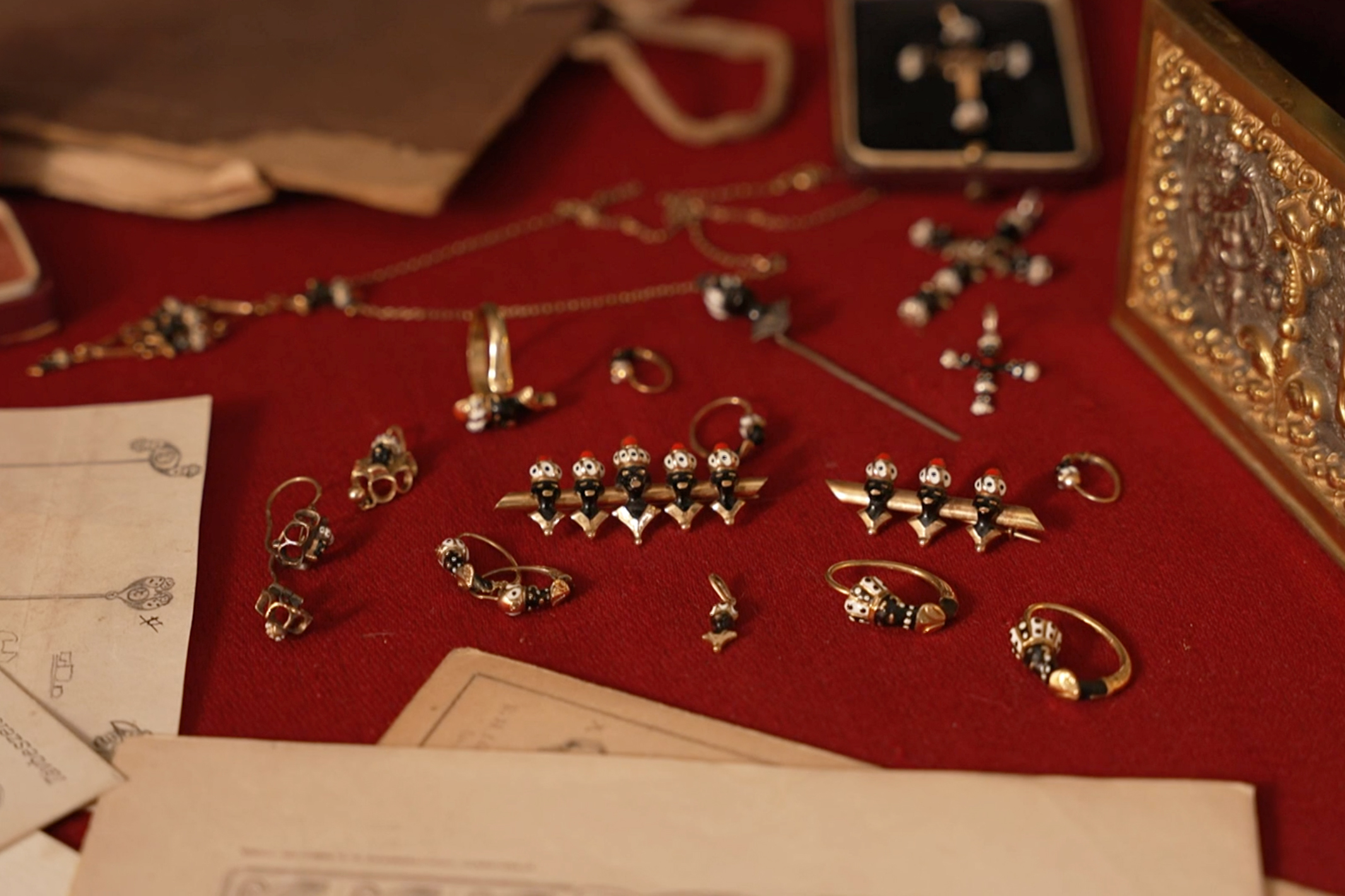
Morins Jewellery: a symbol of tradition with a modern twist

Far more than just gold and enamel earrings, Morins are treasured by many in the Engadine as a cultural legacy passed from mother to daughter. Featuring the head of a dark-skinned figure, Morins are an Engadine icon, symbolising deep-rooted identity.
The Engadine’s love of Morins, as documented in Dolf Kaiser’s book* on Graubünden’s confectioners, is said to have begun in Venice.
During the 17th and 18th centuries, many people moved from canton Graubünden to Venice to earn a living, particularly in confectionery but also working as shoemakers and other professions.
However, in 1766, Venice withdrew the economic privileges of the people from Graubünden, removing their livelihood almost overnight. Expelled within months, they spread across Europe, taking their Morins with them.
The Morins remained as a symbol of solidarity for those expelled from Venice. When two women wearing the earrings met, it acted as a secret signal of shared heritage. Yet how the Morins became a cultural symbol in the Lower Engadine, especially in Sent (often referred to as the “Morins of Sent”), remains unclear.
A Venetian legacy – or not?
The story might be simpler, with the Morins as a memento from Venice. Unique, portable and quintessentially Venetian, the earrings made ideal gifts.
However, research reveals an alternative origin: the Morins are strikingly similar to the Morcic, or Moretto Fiumano, an earring popular in Rijeka, now Croatia. In the 19th and 20th centuries, Rijeka’s Morcic earrings became a cultural emblem and were later chosen as the city’s symbol in the 2000s, appearing in festivals and tourism campaigns.
Where Engadine and Croatian histories converge
Historically, Rijeka also attracted Engadine emigrants seeking work. By the early 20th century, several cafés in Rijeka were Engadine-owned, and the Graubünden community had even formed their own association there. Near the famous Morins manufacturer, Gigante, these Engadine-run cafés served as meeting points for travellers and locals alike.
While no concrete evidence ties Engadine Morins directly to Rijeka, their stylistic roots suggest a link closer to the Croatian Morcic than to the Venetian styles.
Tradition Meets Zeitgeist
The Morins of Sent may indeed have a twin in Rijeka’s Morcic. Little known in Croatia, Morins are nevertheless valued symbols of cultural heritage, representing identity in both the Alps and along the Adriatic coast. Although treasured in their respective regions, both the Morins and Morettis remain somewhat at odds with modern trends.
*Referenced book: Dolf Kaiser’s ‘Almost a Nation of Confectioners? Graubünden Confectioners, Cafetiers and Hoteliers in Europe up to the First World War’
Translated from German using DeepL/amva
More

In compliance with the JTI standards
More: SWI swissinfo.ch certified by the Journalism Trust Initiative
















![The four-metre-long painting "Sonntag der Bergbauern" [Sunday of the Mountain Farmers, 1923-24/26] had to be removed by a crane from the German Chancellery in Berlin for the exhibition in Bern.](https://www.swissinfo.ch/content/wp-content/uploads/sites/13/2025/12/01_Pressebild_KirchnerxKirchner.jpg?ver=cb688ed5)















You can find an overview of ongoing debates with our journalists here . Please join us!
If you want to start a conversation about a topic raised in this article or want to report factual errors, email us at english@swissinfo.ch.